INDIA
How To Do Dzukou Valley Trek By Yourself: My Trip To Nagaland
Hornbill Festival, Kohima And Villages of Nagaland
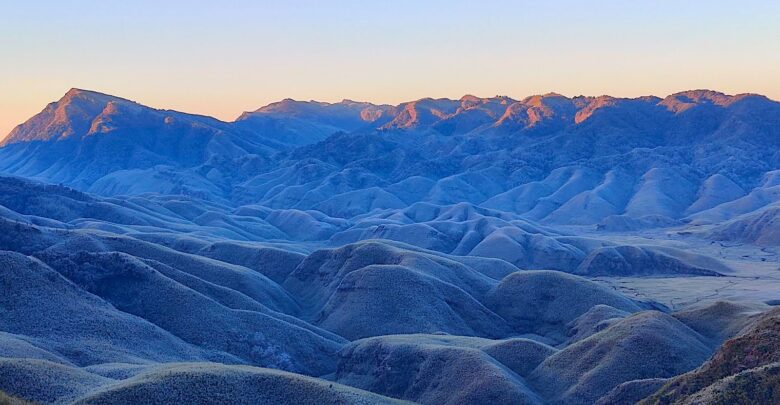
Last Month, I solo traveled to Northeast India for a month and it was an exhilarating experience. Eight States forms Northeast India which includes Arunachal Pradesh, Assam, Meghalaya, Manipur, Mizoram, Nagaland, Tripura and Sikkim which are collectively known as “Seven Sisters And A Brother”. After my visit to Sri Kartarpur Sahib in Pakistan, I traveled to Delhi. From Delhi, I board a train to Guwahati, Assam. Guwahati is a gateway to Northeast India. After spending a couple of days in Guwahati, I traveled to Dimapur, Nagaland via train. From Dimapur, I catch a bus to reach Kohima.





KOHIMA
Kohima is the capital city of Nagaland. The road from Dimapur to Kohima is one of the worst roads I have ever traveled to but I soon forget about the tiresome journey once I reached the beautiful city of Kohima. Kohima is a hilly city which somewhat reminds me of Istanbul. I visited Kohima War Cemetery. It is dedicated to soldiers of the Allied Forces who died in the 2nd World War at Kohima. The night market was setup due to ongoing Hornbill festival where I tasted different varieties of street food. While traveling in Nagaland, always remember this: Being a Christian majority state, Sunday is equal to the dead world in Nagaland. Nothing moves! Indian Tourists (from other states) need tourist ILP to visit Nagaland and can be applied online here. I attend the famous Hornbill Festival before doing the Dzukou Valley trek. First, let’s talk about the beautiful Dzukou Valley trek.
DZUKOU VALLEY TREK/HIKE
To be honest I am not sure how to classify Dzukou Valley expedition. So I will leave that to the readers. One can do the trek by himself/herself without any guide or special hire given he/she is up for it. Let’s just call it Trek for the sake of it 🙂 Dzukou Valley is situated at an altitude of 2450 m. There are two routes to do Dzukou Valley Trek. First one is from Zakhama which I did not take and the second one is from Viswema which I have undertaken. The people I met who had done the trek from both sides said the Viswema one is easier as compared to Zakhama. To reach Viswema, I catch a shared Tata Sumo from B.O.C in Kohima. It cost me INR 50. Viswema is around 20 Kms away from Kohima. Sumo dropped me at the starting point of the Dzukou Valley trek. There is a small office where one need to pay the entry fees i.e. INR 100 for Indians. There is an extra charge of INR 200 for a camera. Save the receipt as you will be needing it at the top.
For better understanding, Let’s break Dzukou Valley trek into three parts:







PART 1
This part can be traveled via private vehicle or by special taxi or on foot. Taxi charges are fixed i.e. INR 1500. This part consists of uneven steep roads. I decided to cover it on foot. It took me approx. 2 hrs to cover this part while ascending and approx. 90 mins while descending. While the roads are in bad condition but the views surrounding the route makes it worthwhile. One can even try to cover this part by hitchhiking as there are many vehicles(mostly tourists) ply on this route. The path is pretty straight forward. No scope for confusion. I would rate this part as easy to moderate to bit difficult in terms of difficulty. Halfway through I was thinking that I may be the only person who is covering this part by foot but then I met two guys (one from Kerala and one from Assam) and even they were relieved to know that they were not the only ones who are doing it alone hahah. Shortly after, we met another guy from South India who were descending and he assured us it is quite normal to cover this part on foot. Part one ends at the parking space. From there one can cover the rest of the parts by foot only.








PART 2
The second part starts with a small stretch of a plain path before the stairs. Part 2 majorly consists of stairs made of rocks. It took me approx. 90 mins to cover this part while ascending and around 50 mins while descending. The path is pretty straight forward. No scope for confusion. Just follow the stairs. I would rate this part as moderate in terms of difficulty. I met a group of people returning from the Dzukou Valley. They informed me about the snowfall at Dzukou Valley and told me to get ready for the bone-chilling cold. I did not pay too much attention to their words then but I do remember them later. Part two ends here(see pic above).






PART 3
Part three is the most picturesque of all the parts. This part is mostly plain but a bit confusing. After reaching at the end of Part Two, I followed the Dzukou valley sign and reached the crossroads. I followed the wrong path and ended at the dead end. I retrace my steps and reached back at the crossroads and chose the right path this time. I followed the path until I reached the narrow path. It just plain path from here. I actually completed most of this part by running. Running on a narrow path surrounded by the mountains surely gave me an adrenaline rush. It took me approx. an hour to complete Part 3. At the end of Part 3, you will see a Guesthouse. You cannot miss it. The Dzukou valley trek is quite famous. So you will meet many people on the way and even if you get lost or have any confusion, you can always take the help of fellow trekkers. I would rate this part as easy in terms of difficulty.













MY DZUKOU VALLEY EXPERIENCE
The view of Dzukou Valley from the Guesthouse was clear and therapeutic. I went to a nearby cliff to watch the sunset. It was spellbinding. The place was quite crowded during my visit. Maybe it was because of the ongoing Hornbill festival. I spend 2 nights at the Guesthouse. One need to produce their Dzukou valley entry receipt to get a place at the guesthouse. There are three options for staying at the Guesthouse i.e. Camping, Dormitory and Private room. See the rate card pic above. Since I don’t have a tent, I chose the Dormitory option. To sleep in the dormitory, I need to additionally rent a mat and blankets. On the first night, I rented only one small blanket and almost freeze to death at night! It gets bone-piercing cold at night thanks to the snowfall. I did not repeat the mistake on the second night and rent 2 big blankets apart from the small one. The guesthouse has a kitchen with a comprehensive food menu. Seeing snow-capped mountains in the morning was simply breathtaking. When the sun rays fell on the snow-capped mountains, it looks majestic. People at the guesthouse informed me that the snowfall is happening this year in Nagaland after 40 Years. My initial plan was to stay for one night at the guesthouse. On the first night, I met a group of college students who reached Guesthouse at night. We get along pretty well and I decided to stay one more night at the Guesthouse. We went on an expedition the next day to explore nearby frozen lake, caves and mountains. As per them, people used to camp out for days in caves but now it is not allowed anymore. We cooked and ate food together. Well, mostly they cooked and we ate hahah. They are a great bunch of people. Quite humble, hospitable and helpful. They gave me insight into the culture of Nagaland and Its people. We played Antakshari(Sing-Along) at night followed by Memory game while cooking/eating our dinner. My trip to Dzukou Valley or even Nagaland would be incomplete had I not met them. It did not snow on the second night hence was less cold than the night before but it wall all foggy. I bid them goodbye in the morning and started my descend. Needless to say, I completed my descend quicker than my ascend. Dzukou trek can be done by all age groups. It is something that should not be missed when in Nagaland.





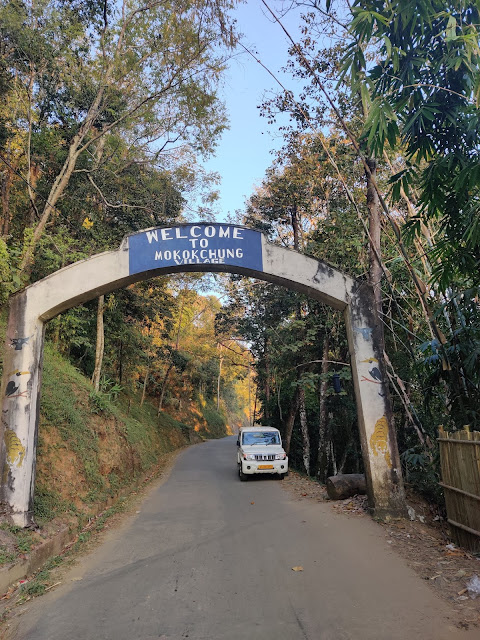
VILLAGES OF NAGALAND
The plan was to travel to Mon and Longwa Village but due to festive season, I couldn’t able to procure the bus/sumo tickets! So I traveled to Mokokchung town instead as per the suggestion by one of the college students I met during my Dzukou Valley trek. It is 150 Km away from Kohima. I traveled there via shared sumo for INR 500. Mokokchung is a laid back town with some picturesque views. I visit the nearby villages i.e. Mokokchung Village and Ungma Village. The villages of Nagaland are very clean and well maintained. I came out of the villages being really impressed. There are some villages near Kohima too which I missed i.e. Khonoma Village, Touphema Village, Kohima Village.















HORNBILL FESTIVAL: FESTIVAL OF FESTIVALS
There are many festivals that happen across Northeast India but Hornbill Festival is known as Festival of Festivals because here you can see cultural shows from all the states of Northeast India. It is very well organised internationally renowned festival. It takes places every year in the month of December at Naga Heritage Village(10 km from Kohima). Apart from cultural shows, there is Craftscape where you can see Naga people making handicrafts, jewellery, clothes. You can buy them at the stalls nearby. At Artist corner, local artists showcase their art. Horticulture booth where you can find fruits, vegetables, spices, flowers of Nagaland. There’s a World World 2 Museum located on the premises which document the Kohima war fought during World War 2. Apart from these attractions, there were several competitions which takes place. One such competition I witnessed was King Naga Chilli contest where contestant who eats most chillis in a minute wins the contest. Needless to say, a local person from Nagaland won the contest! Let me tell you, King Naga chilli is not your ordinary chilli. it is hot as hell! On another night, I attended a concert which has some catchy tunes. Also, there’s a musical show of the famous Tetseo Sisters which happens twice a day during the Hornbill Festival. They are a quartet of sisters from Nagaland who performs folk songs from Nagaland. The ticket for the show starts at INR 200. It is separate from the entry ticket. Entry ticket to Hornbill Festival was INR 20 per day. Nagaland is inhabited by 16 tribes i.e. Angami, Ao, Chakhesang, Chang, Khiamniungan, Kachari, Kuki, Konyak, Lotha, Phom, Pochuryi, Rengma, Sangtam, Sumi, Yimchungru, Zeliang. Each tribe with their own language, cuisine, culture. You can learn about them by visiting their traditional homes build at the premises where you can even taste their cuisines. During Hornbill festival, there’s a Night Carnival which took place in Kohima town. There were other things like Marathon, Cycle rally, City tours, Kids carnival, Naga Wrestling, Hekko Exhibition Match and much more. It was 10 days long festival. I attended the Hornbill festival just for two days. It is a must-visit festival if you want to know about the cultures of Northeast India while having a great time!





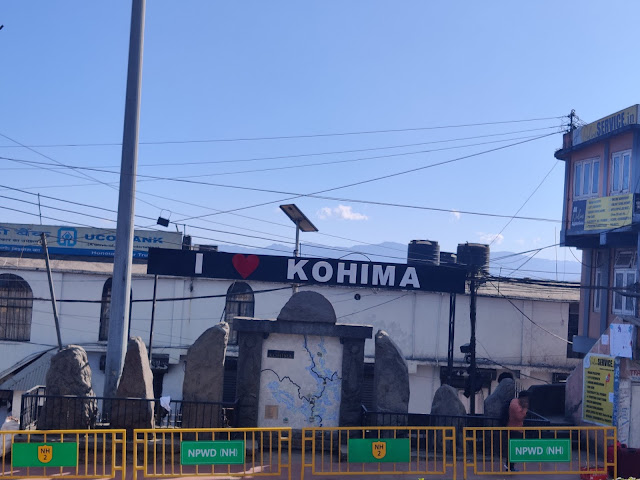




























































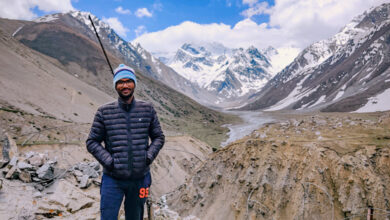

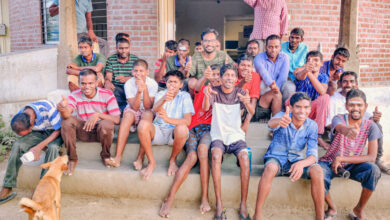
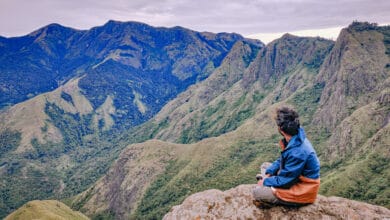
I will for sure share this with my sister who is a world Traveler!
Your photos are so awesome. Every photo tells a story, and I’d love to do this trek.
i have never heard of Dzukou Valley before. Thank you for sharing. I love the photos you have taken of the WWII cemetery and the valley from above and with the sun rays hitting the mountains. gorgeous photos. joy
The pictures are so beautiful! It sounds like an amazing trip! I can’t wait until I get to visit India!!
That looks like such an amazing adventure. Thanks for sharing all of those photos! It felt like I was actually there.
What a fantastic journey! India has so many great places to visit. Kohima and Nagaland look like a place I need to add to my bucket list.
It seems like a nice trekking place. I have never been to trekking when I travel and I seriously think I should do it once in my life. I love to see how the locals live in the mountains.
Hey, nice description of the place with beautiful pictures.. It was interesting to see northeast from your eyes.. Very elaborate n informative description of Dzuko valley trek.. Thank you very much for the information…
The views from the top of the mountain are breathtaking, no wonder you have chose to spend two nights up there. The Dzukou Valley Trek doesn’t look very difficult to me, I’d like to come here and do it sometimes.
What a remarkable journey! I meeting of cultural and natural raw beauty – I will absolutely be looking into the “Seven Sisters and A Brother” for my future travels :)!
Wow, this has definitely become a place on my bucket list. The night markets are beautiful, I can almost smell the food and hear the noises from the market. Your pictures are amazing! I really enjoyed reading this post.
So weird to think that some people still choose to live in tribes – they always seem so happy 🙂
It’s like I am taking a trip with you. Thanks for sharing this post. The pictures are amazing.
You have so much travel experiences and it’s amazing that you’ve reached these remote places and capture them in their glory. The hills and the festivals, those are my favorites.
That trek looks super challenging, but beautiful and rewarding!
Very detailed article. Useful for people visiting Nagaland. In fact I have plans to visit the place. Your blog will be helpful.
Oh my goodness! The views on Dzukou Valley trek are spectacular! I love the signs that try to encourage you up hill, but you don’t really need them when the views from the top are that impressive. The snowfall on your third morning just adds to the prettiness. Wowza.
It’s awesome that you got to visit the Hornbill Festival and learn about the culture of the Northern tribes while you were there.
OMG those photos from the above are absolutely stunning! Some look similar to what we have here in Beautiful British Columbia, Canada. Thank you for posting and adding Dzukou Valley trek onto our “magnificent hiking trails” awareness radar 🙂
Wow! I admire you for traveling alone, this is something that I have wanted to do, also. You have inspired me to try it! Your pictures are great, also.
Well, freezing to death is not on my to do list, so good to know that you can rent blankets. I like the photos, and I the Hornbill Festival sounds interesting.
This looks like such an amazing trip! Your pictures are amazing and I loved reading about your hike.
One of my favorite things about traveling is meeting new people. It sounds like the people you met on top of the mountain really made your trip the best it could be!
I love reading about places that I have no preconceived notions about! It looks like this would be an incredible time!
Those pictures told so many stories! I loved the pics with the villages in the distance and the market photos! Also, I could really go for some Asian street food right now (:
I always live for solo adventures and find post about fellow solo travels very intresting. I’ll be using your tips in the event that I get to hike this beautiful place.
Wow, I love all the photos! My favorite is the tent dormitory and the picturesque view of the mountain at night! I didn’t know it snow part of India.
I did Dzoukou Valley in 2018 Dec. The route is so gorgeous and enthralling. The best part is when you reach the Watchtower and see upto Manipur.
It’s totally true that the best views come after the hardest climb! Dzukou Valley looks absolutely beautiful and I’d totally be up to challenge the trek. The views are just so stunning and that morning light really is breathtaking!
Wow it amazing brother, was so happy to meet you even if it was just for a while and thank you so much for writing so beautifully about our Land.